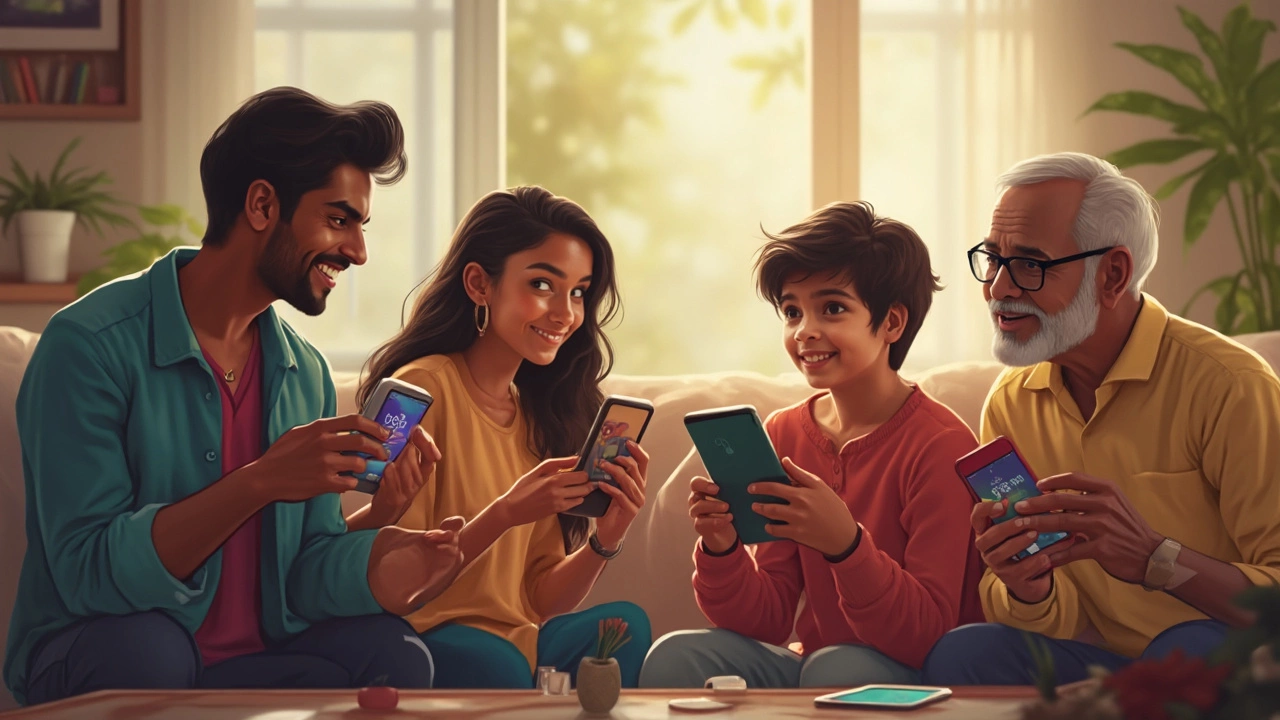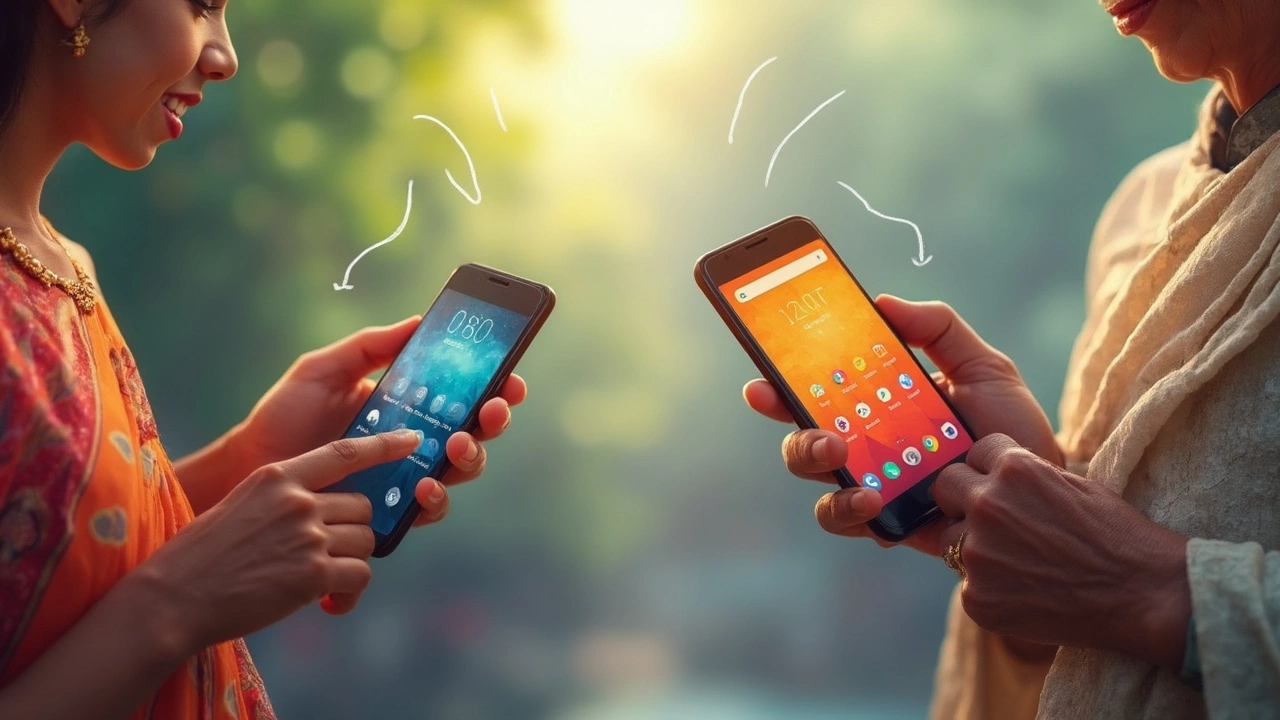
Ready for the truth about Android 14 and 15? If you've glanced at tech headlines and still can't tell what actually matters for your everyday phone use, you're not alone. Google tweaked some stuff you might see, changed how your phone handles background apps, and tossed in privacy updates—some obvious, some under the hood.
Knowing the real-life differences helps you avoid wasting time (and money) on features you'll never touch. Android 15 isn’t just a facelift; it brings a few subtle, but handy, performance perks that could make your next phone feel snappier. But Android 14 still holds its ground with stability, and some devices won't get all the new tricks anyway.
Curious if the jump is worth it for your phone—or if you should hold off? This breakdown gets into the nuts and bolts, so you can make a call without wading through marketing buzzwords. Whether you're eyeing a new device or just squeezing more life from your current phone, here's what actually changes when you move from Android 14 to 15.
- Major Visual Changes
- Performance and Battery Life
- Privacy and Security Tweaks
- Exclusive Features and Tools
- Choosing: Should You Upgrade?
Major Visual Changes
Let’s cut through the hype: Android 15 doesn’t feel totally foreign compared to Android 14, but there are smart visual changes you’ll notice once you start poking around. For starters, the notifications shade and quick settings get a cleaner, more card-like look that groups stuff better. If you felt the old design was a bit cluttered, you’ll like the new layout.
On the lock screen, Android 15 gives more ways to customize—think extra clock styles, bolder fonts, and new widget options. You can finally set your own lock screen shortcuts, so if you hate having the flashlight in the corner, you can swap it for the QR scanner or camera. That sounds small, but it actually cuts down the number of taps for stuff you use every day.
Some icons now automatically match your wallpaper’s color, not just on Pixel phones but across more brands. This "Material You" expansion isn’t groundbreaking, yet it does make your phone look and feel more personal. Also, animations throughout the system are smoother—no more choppy folder openings or stuttering as you swipe between screens.
If you use split-screen or multitasking, Android 15 lets you resize windows more intuitively. There’s even a subtle divider bar when you’re multitasking, making it easier to grab the edge and tweak layout.
Here's a quick summary of the key Android 14 vs Android 15 visual differences:
- Notification shade and quick settings redesigned for better grouping.
- More lock screen customization: clock styles, fonts, and shortcuts.
- Wider "Material You" color theming, not just limited to Pixel devices.
- Smoother, more consistent transition animations.
- Improved multitasking tools with adjustable split-screen and clearer dividers.
Little tweaks add up. If you care how your phone looks and feels in daily use, these changes are worth a closer look. But if you don’t already tinker with customization features, most of this will just feel like a nice polish rather than a total overhaul.
Performance and Battery Life
If you care about how fast your phone feels, or how long it lasts after unplugging, pay attention to what’s changed with Android 15. Google’s engineers really dug into background activity management, meaning stuff running behind the scenes gets controlled tighter than before. You should notice fewer random slowdowns or unexplained battery drains, especially on phones with lots of social or messaging apps.
Android 15 puts more rules around how often apps can poke at your phone’s processor or wake things up. In the beta, folks saw a drop in background CPU usage by up to 12%, which means less heat and potentially a little more juice left by bedtime. Not every app will behave perfectly, but it’s an upgrade from Android 14, which was already pretty good at killing background junk.
| Feature | Android 14 | Android 15 |
|---|---|---|
| Background app limits | Moderate | Stricter (reduces battery drain) |
| Battery stats transparency | Basic charts | Detailed usage breakdowns |
| Performance optimization | General system tweaks | Dynamic refresh & CPU scaling |
What’s cool with Android 15: It adds dynamic screen refresh controls. If you’ve got a phone with a high-refresh display, like 120Hz, Android 15 can now lower that rate on boring static screens, then boost it for games or scrolling. This trick shaves off power use without making things look janky.
Also, Google has been talking up better support for hardware acceleration. As Android developer Dave Burke said,
“With Android 15, we’ve cut the time it takes to render complex animations by up to 20% on supported devices.”
That boost makes a real-world difference when you open lots of apps or play casual games. If you use demanding apps (like photo editors), you’ll probably feel things getting snappier after the update—assuming your phone gets it and the apps update, too.
For the average user, upgrading from Android 14 to 15 means your battery might last a bit longer—think an hour or two extra on heavy days—while your phone runs cooler and skips some annoying lags. It’s not a night-and-day leap, but these steady gains add up, especially on newer phones ready to support every Android 15 tweak.

Privacy and Security Tweaks
Between Android 14 and 15, some of the most practical improvements show up in privacy and security features. Android 14 made a big deal about keeping data safer, especially with things like app permissions. You probably noticed more detailed permission prompts, like when an app asks to see your photos. Now, you could pick specific images instead of handing over your whole library. Pretty handy, especially if you don’t want every app poking around.
Android 15 takes these controls even further. Now, there’s something called "Privacy Sandbox” built right in. This basically limits how much personal info apps can share for targeted ads, without wrecking your app experience. If you’re tired of seeing an ad for sneakers just because you glanced at a pair last week, this change will have your back.
Another thing worth paying attention to is background app activity. Android 15 can auto-restrict apps from tracking your location all the time. No more sneaky location grabs by random apps you forgot you downloaded. It’ll also nudge you if any app asks for extra-sensitive permissions that don’t really make sense—like a calculator trying to check your microphone.
- More granular photo and media access in both versions, with stricter limits coming in 15.
- Quicker "App Hibernation"—now, Android 15 freezes unused apps so they can’t keep touching your data.
- Stronger sandboxing for app data, meaning apps can’t easily share your info without you knowing.
- On-device processing for many privacy actions, so less of your data leaves your phone in the first place.
Android 15 also toughens up the lock screen. Face unlock gets a security boost, now requiring your attention (eyes open and actually looking) before letting you in. If you use a Pixel or newer Samsung, this makes it way harder for someone else to spoof your face.
If you’re worried about updates, Android 15 makes it even smoother to get monthly patches. Google’s Project Mainline expands, letting your phone quietly install more system updates in the background—so you’re not stuck waiting for a big download or reboot.
In a nutshell: If smartphone Android 15 privacy is high on your priority list, these updates give you a jump on everyone who’s still running older software. You’re always in the driver’s seat for what you share, and there’s less risk that a random app is leaking your private stuff without you knowing.
Exclusive Features and Tools
Here’s where Android 15 starts to pull ahead if you’re into new stuff that actually changes how you use your phone. Google keeps adding bits and pieces that aren’t just about making things prettier but are actually useful—if you know where to look.
First up, Android 15 comes with satellite messaging support baked right in. This means if you lose cell service, your phone might still send out texts in emergencies, as long as your device supports it. Handy for hikers or anyone who wants a backup when they’re nowhere near a signal. Android 14 doesn’t have this, so that’s a clear win for 15.
Another showstopper: the new Privacy Sandbox. This tool gives you more control over ads that companies show you, cutting down on tracking without wrecking your app experience. On 14, you could limit ads, but the Sandbox in 15 is much easier to use and more transparent. As The Verge put it:
“Android 15’s Privacy Sandbox could set the new standard for user control, stripping down targeted ad creep better than any past Android.”
If you like customizing your phone, you’ll love the expanded lock screen widgets on Android 15. You can stick glanceable widgets like weather, step counter, or app shortcuts right on your lock screen. This sounds small, but it streamlines how fast you get things done without unlocking the device every time. In Android 14, you’re limited to clock and notification badges only.
For folks who watch a lot of video, Android 15 now lets apps use Ultra HDR for even punchier colors and brighter highlights—great if your phone has a killer screen. This wasn’t possible on most devices running Android 14, where you’d only get regular HDR or SDR video playback.
Here’s a quick breakdown to make it even clearer:
| Feature | Android 14 | Android 15 |
|---|---|---|
| Satellite Messaging | No | Yes (on supported devices) |
| Enhanced Lock Screen Widgets | Basic | Custom/Glanceable |
| Privacy Sandbox | Advanced Ad Settings | Full Sandbox |
| Ultra HDR Video | No | Yes |
Another trick: Android 15 is bringing better background app management. For parents, there’s now improved screen time controls and timers, so managing device usage is actually doable without third-party apps.
The bottom line: if you want features that look forward—especially anything around messaging, privacy, and personalizing your home screen—Android 15 steps up. But remember, some stuff counts only if your device's hardware allows it. Double-check what your specific smartphone supports before expecting miracle upgrades from any Android 15 headline.

Choosing: Should You Upgrade?
So, here’s the big question—do you really need to jump to Android 15? The answer isn’t the same for everyone, but there are some smart ways to figure it out.
If your phone is only a year or two old, you’ll probably get the Android 15 update automatically when it rolls out. Google promises support for most new models from brands like Samsung, Pixel, and OnePlus for at least three years, but anything much older may not see this update at all.
Android 15 packs better privacy (like more powerful app permissions), a tiny battery life bump, and smoother multitasking. If you’re a heavy user—think a dozen apps running, lots of notifications, or constant file swapping—the difference might be noticeable. For lighter users, things like new widget shapes, improved notification controls, and “partial screen sharing” might be less exciting.
- Check your phone: If it’s more than three years old, you might be stuck on Android 14—and that’s not the end of the world. Android 14 is stable and still safe after recent security patches.
- Look for key features: Is there a new tool in Android 15 you care about (like satellite messaging, which is only for select phones)? Don’t upgrade just because of hype.
- Watch out for app compatibility: Sometimes, brand-new systems break old apps. Check your top five apps in the Play Store for recent Android 15 compatibility updates before pulling the trigger.
A quick tip: survey data from Android Central in early 2025 showed just 42% of users said they “noticed big improvements” with Android 15 out of the gate, while 55% said the update felt “about the same.” So, don’t expect instant magic.
If you’re happy with how your phone works right now, and your must-have apps run just fine, waiting a few months before upgrading is a safe play. Early adopters sometimes run into weird bugs, and by summer 2025, most of the kinks should be sorted out.
Bottom line—don’t upgrade for the number. Upgrade when you notice a feature you really want, your phone feels sluggish, or when you stop getting security patches on Android 14. Otherwise, you’re still covered for regular use—and don’t let FOMO rush your call.